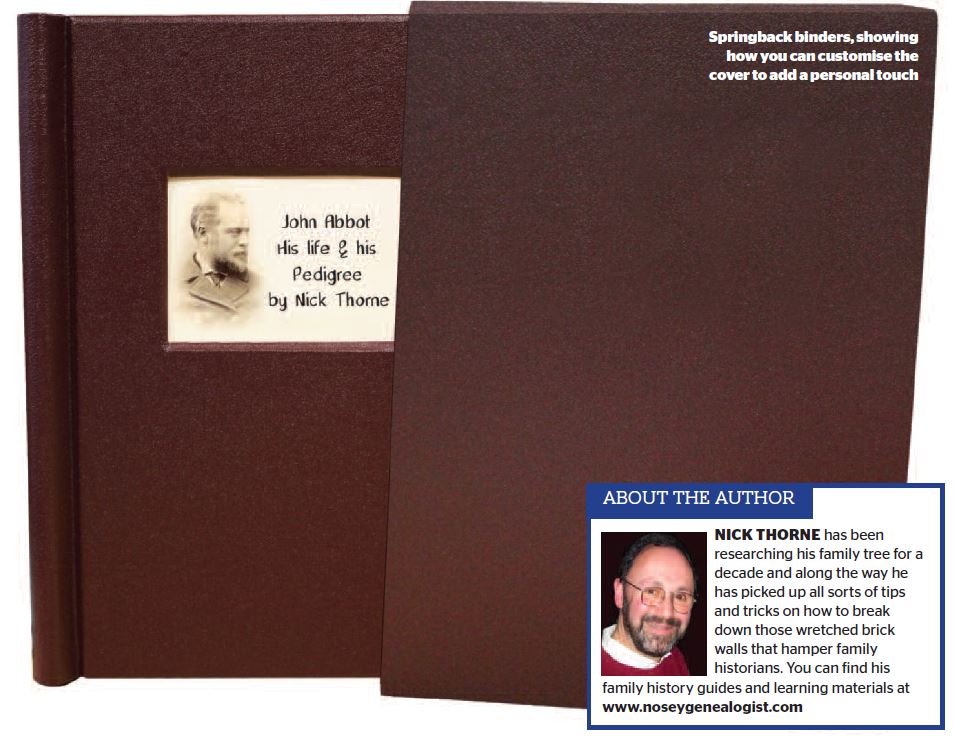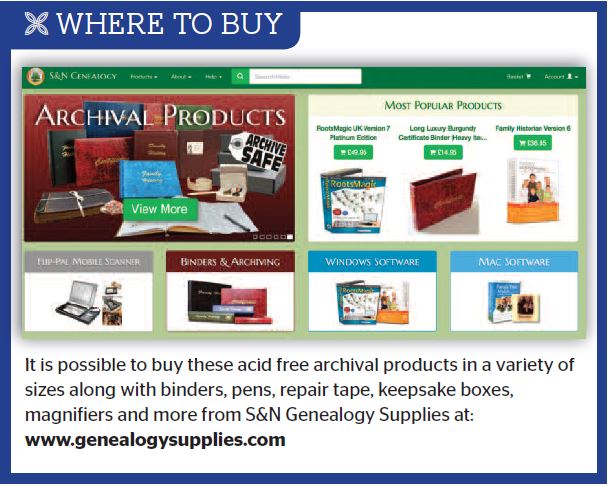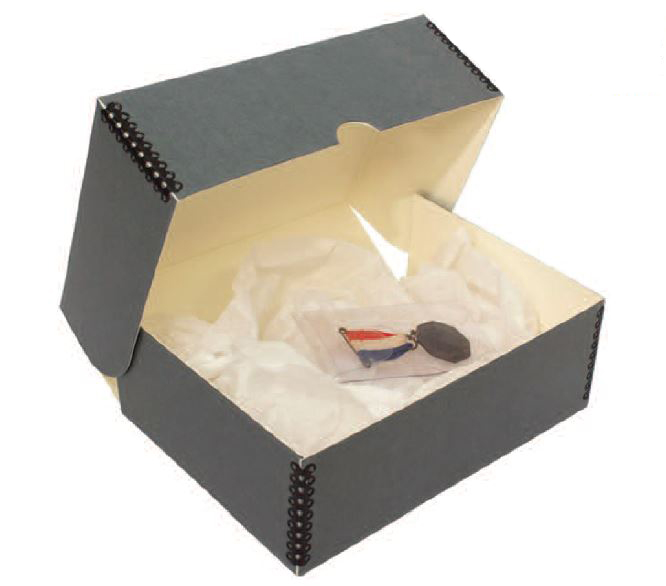
Discover Your Ancestors
Two critically acclaimed publications are available to family history researchers - the annual print magazine, Discover Your Ancestors, and the monthly online magazine, Discover Your Ancestors Periodical. Click here to subscribe.Preserved for posterity
Nick Thorne explains the importance of storing your family history research properly and safely for the future
With all the hard work and expense that collecting our precious family history documents can involve, to hope that they will still be readable and in great condition in years to come is not an unreasonable expectation. This is especially so if we have stored them in protective plastic sleeves. But watch out if you are relying on the standard pocket leaves, bought from your local high-street stationers. Simply popping our old photographs, or our ancestor’s documents, into an ordinary PVC sleeve could mean that we and future generations are going to be very disappointed when our valuable keepsakes are not preserved intact for the future. If I think back to when I first began my family tree, I can recall being allowed to photocopy some documents owned by a member of my extended family. I was shown a copy of a birth certificate from the GRO that had been stored in a basic shop-bought sleeve. The certificate had bonded with the toner on the page and transferred a black trace to the plastic which produced a ghosting effect around the words just as soon as the document moved. Acid, used in many of these standard sleeves, can also leach into the paper of our documents and make them brittle. Instead of preserving our certificates for posterity, the papers are subjected to the leaching of the plasticiser used in the manufacturing process of the sleeve.
When it comes to all those valuable and expensive to obtain vital record certificates that I’ve purchased myself from the General Register Office and the photocopies of family documents bought from The National Archives, I would really like to prevent these from going the same way. Photocopies that I’ve made of my own treasured family documents are also vulnerable to this damage, as are medal ribbons and even the medals themselves. Luckily the solution is quite simple; it is to keep our documents in specialist binders with inert, archival quality sleeves, instead of the stationer’s basic PVC sleeve. This will keep our records in prime condition, while also allowing us to share our research with friends and family. Some time back I discovered that all sorts of archival products can be easily obtained from genealogy suppliers.


Products
Ring binders come in a variety of sizes, from A3 and A4 to a specially designed ‘long certificate’ binder that can hold both the old ‘long’ style certificate as well as the new A4 style. Marrying these up with portrait or landscape archival sleeves of the correct size is, I have found, a great way to keep my documents safe for the future. If you have a number of photographs or other memorabilia to store, there are various sleeves that you can get with different ‘pocket’ options. Each A4 sleeve is split into between one and 20 pockets per page. The four-pocket sleeves are ideal for photographs, while the eight-pocket ones are perfect for cigarette cards or those small medals that you may have found your ancestor had been presented with.
Springback binders
Recently my cousin asked me what I knew about his father’s family. My maternal aunt had married a soldier, in World War Two, but the marriage didn’t last long after the birth of the children. Collating the research that I had already done on my aunt’s first husband’s line back a number of generations, I then had a large number of pages of family history to present to my cousin. I didn’t particularly want to punch holes into the papers, so in my search for a solution I hit upon using a Springback binder to present his family tree. With this type of binder, you can simply choose how many sheets that you want, fold the covers of the binder back and place the paper into the spine. You can then add or remove pages as many times as you like with no need to use a hole punch. Each Springback binder has a hardback cover with the all important acid-free lining and a 25mm capacity that will allow you to insert up to 200 A4 pages. I completed the presentation to my cousin by adding my own title page. The particular binder that I used was exclusively available from S&N Genealogy Supplies (www.genealogysupplies.com): it had a window that enabled me to make a customised title page that could be seen through the cover. In my view this added a particularly professional finish to the presentation of that part of our family story.

Acid-free storage boxes provide a safe way to preserve your family heirlooms
Storage boxes
Sometimes we may be lucky enough to have passed on to us various objects and memorabilia that won’t fit in a binder passed on to us. For example, I have my grandfather’s old wristwatch and an engraved silver-topped dressing table bottle left to me by my mother. Many of us may have items like this, or perhaps it’s our ancestor’s medals we want to keep safe. There is a range of storage boxes on the market which have been specially designed to protect our items from sunlight, dust and other things that could cause them harm. If you are looking to buy one I would suggest choosing an heirloom box that is lined with lignin-free paper; also try to make sure that the box is designed to protect against acidity and sulphur in the air. The best boxes have a hinged lid design for easy access and metal edges that give them extra stacking strength.
Gold archival CDs
While thinking more widely about my family tree, much of it is digitally stored on my computer. Over the years I have collected a large number of images, videos and documents, plus back-ups of my family tree, all of which I want to keep safe. The ideal solution that I have found for longterm storage is to burn them to a gold archival CD. Look for CDs that incorporate a 24kt gold reflective layer that provides maximum resistance to degradation caused by environmental factors such as corrosion, which is a major cause of failure in standard media. Preserving your family history, for the generations that follow, need not be complicated; simply ensure that you use the best archival quality products, rather than those of the basic office supplies type.